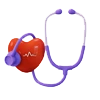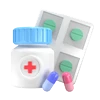Genetic tests analyze a person's tissue or blood to determine if there is any modification in their genetic map.
The data obtained after performing the genome study is lifelong and does not need to be repeated over time.
The analysis of a patient's genes can provide valuable information that helps physicians make accurate diagnoses, identify risk factors, detect diseases in early stages and personalize treatments to provide the best possible medical care.
The Clinic's Genomic Medicine Unit performs genetic analysis in a clinical setting, obtaining greater reliability and accuracy, not only in the interpretation of the data, but also because of the importance of performing it within a medical context that also includes counseling, diagnosis and treatment design.
Genomic Screening
The first health checkup to include complete genome sequencing, analyzing more than 700 known genetically based diseases.
What are the reasons for genetic testing?

Prenatal diagnosis
It is recommended for couples with a high risk of having children with genetic disorders.

Neonatal diagnosis
To identify genetic diseases in neonates and start treatment early.

Carrier detection
To know the risk of transmission to children when there is a family history.

Disease prevention
It allows for regular monitoring and early treatment to minimize the severity of the disease should it occur.

Disease management
To confirm a diagnosis and to know the evolution of the disease.

Response to treatment
Determine how you might respond to and improve the effectiveness of prescribed medical treatment.


